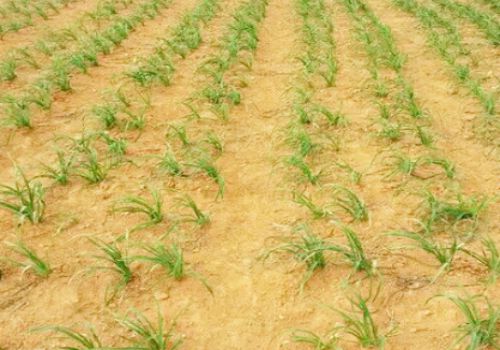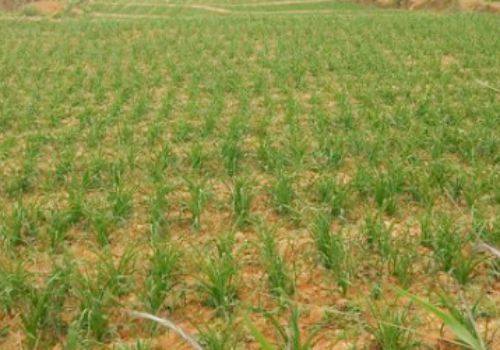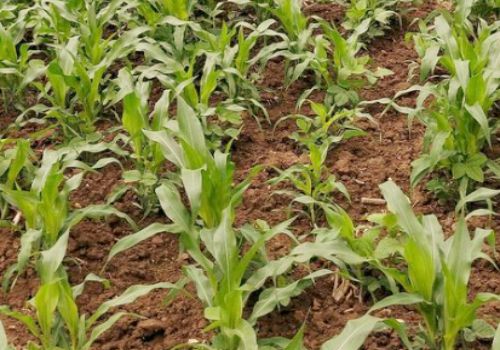Introduction to the planting method of "precious wild vegetables" cauliflower!
Daylily is also called "brain vegetable", etc., is a kind of more precious wild vegetables in our country, because of its high nutritional value and has the effects of anti-inflammatory, clearing heat and improving eyesight and calming the nerves, etc., it is liked by many people, plus its high survival rate, planting prospects and high economic profits, so many growers also want to plant, so Xiaobian will introduce the planting method of daylily to you:
I. Planting time
Daylily is a seasonal vegetable in the market at present. Daylily can only be produced in a certain season. The production time is generally from June to August. Daylily can be planted in spring and autumn. Its growth period is divided into seven stages: germination period, leaf opening period, bolting period, flowering period, leaf drying period, leaf opening period and dormancy period in the next year. This also shows that planting daylily can last for several years and harvest, and it is very affordable.
II. Land selection and preparation
Daylily's requirements for soil are not very strict. Its ability to resist poverty and drought is strong and its life span is relatively long. It can generally grow for 5-8 years, so it is more suitable for planting alone in hillsides and other areas. However, if it can be planted in places with loose and fertile soil, it will grow better and yield higher. At the same time, it can also prolong its service life. When preparing the soil, try to turn it deep. This will minimize the threat of pests and prevent lodging.
III. Planting methods
There are two ways to plant day lily. The first way is to plant seedlings by sowing. Put the seeds of day lily into the seedbed and transplant them after the seedlings are strong. However, this way has two disadvantages: the yield is not high and the quality is not good. Secondly, it takes the third year to flower after planting and the fourth year to reach normal yield. Therefore, the first way is generally not recommended. The second way is to breed by dividing plants. After harvesting day lily in autumn or after dormancy, plant the newly grown young roots on the old seedlings separately, so that after planting, the harvest efficiency will be much higher. If there are no old seedlings, you can buy them from others.

IV. Field management
Daylily planting should be carried out according to reasonable density, generally 35-40 cm per plant interval, the most suitable temperature for daylily growth is about 15-20 degrees Celsius, so temperature regulation is needed in its flowering period, which can promote flowering and improve quality and yield. The most important thing for daylily is fertilizer management, generally three times of fertilizer application. The first fertilization is to apply a mixed fertilizer of nitrogen, phosphorus, potassium and urea at the time of germination to promote germination and shorten the bud period. The second fertilization is usually urea and potassium fertilizer to promote the growth of new branches, and the last fertilization is at the time of flowering, which is conducive to shortening the flowering period for harvest.
V. Disease prevention
Daylily disease is relatively small, that is, sometimes some aphids or leaf spot disease, so in the discovery of aphids less time can be artificial pest control, more to spray dimethoate EC, spraying within half a month can not be harvested, followed by leaf spot disease generally using chlorothalonil can be.
VI. Harvesting and processing
Daylily is generally flowering at night, so it is generally harvested every morning, once it withers at noon, if it rains, try to harvest it one day earlier, then its growth rate is very fast, if it is also in accordance with the past time, it is useless, after harvesting, daylily should be processed, generally it is first steamed and then dried, and finally packaged.
Summary: The above is about daylily planting methods related to the introduction, growers in the planting can refer to the above daylily planting methods to plant, I hope to help friends in need!
Flower Language and Plant Culture of Daylily
Flower language of day lily
Daylily's flower language is hidden love, relief and forgetfulness. In China daylily and carnation have the same meaning today, both are mother flowers.
Plant Culture of Daylily
As mentioned above, it is also known as the worry grass. In the Book of Songs, there is a story about a woman who was married and her husband went on an expedition because of war. The woman planted daylily at home to forget her worries and relieve her missing feelings. Therefore, it was called "worry grass" by the world.
There is also a story about daylily in ancient times. It is said that Chen Sheng was poor and destitute before the uprising, and his body was swollen due to hunger. One day, went to a family surnamed Huang begging, mother-in-law gave him three bowls of day lily to eat, Chen Sheng felt very sweet at that time, better than any delicious, and not only Chen Sheng's edema is also good. Later, after Chen Sheng became king, he invited Huang's mother and daughter into the palace. Her mother-in-law brought some day lily to him to eat, but Chen Sheng felt that it was no longer so delicious. Mother-in-law told Chen Sheng that because he ate too much wine and food, wild vegetables naturally felt bad. Chen Sheng was very ashamed after listening to it. Later, the mother and daughter stayed in the palace to plant day lily. After being discovered by the doctor, it became a traditional Chinese medicine.
Daylily is often quoted by poets in ancient times and has high literary value. For example, Su Dongpo, Gao Qi, Su Zhe and others have written "Hemerocallis." There are many other poems in which daylily appears.
What are the wild vegetables suitable for artificial cultivation?
Wild vegetables can be planted all year round, and what method to cultivate depends on the season and the characteristics of wild vegetables. As early as 1998, at the International Symposium on Mountain Resources Development and Ecological Protection, experts predicted that wild vegetables would become green food on the table in the next century. Nowadays, wild vegetables are getting closer to people's lives and gradually become a green and healthy eating fashion. So, what are the wild vegetables suitable for artificial cultivation?
Common wild vegetable varieties suitable for artificial cultivation include: large-leaf dandelion, ginseng vegetable, chrysanthemum brain, common ginseng, high-yield ginseng, giant ginseng, sweet dew seed, purple back vegetable, rich vegetable, pearl vegetable, water celery, vegetable wolfberry, vine notoginseng, green heart vegetable, red heart vegetable, Tianqi vegetable, willow Artemisia, bracken, Malan head, houttuynia, day lily, mint, small leaf koji, small root garlic, wild leek, Chinese toon, balm, Rosa roxburghii, etc.
Wild vegetable cultivation
Winter greenhouse can be used in cold season, arch shed or open field cultivation can be used in spring and autumn, and shade net cultivation should be used for planting wild vegetables that do not like strong light in summer.
Common cold-resistant varieties are: shepherd's purse, noodle vegetables, Artemisia capillaris, wild dandelion, common wild dandelion, vegetable isatis root, water celery, Malan head, Houttuynia cordata, pearl vegetables, willow Artemisia, Yangxin vegetables, small root garlic, ground ginseng, Ganluzi, chrysanthemum brain, mountain alfalfa, koji vegetables, Isatis indigotica, balm grass, Chinese toon, wild leek, bracken, koji vegetables, vegetable wolfberry, mint.
Perennial wild vegetable varieties mainly include: Ground ginseng, sweet dew seed, wild dandelion, big leaf dandelion, wormwood, vegetable isatis root, ginseng vegetable, chrysanthemum brain, mountain alfalfa, bitter vegetable, small leaf koji vegetable, water celery, green heart-nourishing vegetable, red heart-nourishing vegetable, gynostemma pentaphyllum, watercress, rich vegetable, purple shellfish, pearl vegetable, vegetable wolfberry, vine notoginseng, willow wormwood, houttuynia cordata, malan head, bracken, plantain, mint, Chinese toon, green vegetable, isatis leaf, small root garlic, wild leek, pseudo-ginseng vegetable, balm grass, etc.
The remaining varieties are annual or biennial.
- Prev

How much is a daylily seedling? How to grow?
Daylily is also called day lily, etc., because it is both a vegetable and a medicinal material, plus its own adaptability is also very strong, belonging to a relatively good planting variety, making many growers also want to plant, then how much is a daylily seedling? How do you grow it? How much is a daylily seedling?
- Next

Introduction to the planting method of Rosa roxburghii roxburghii for both medicine and food!
Rosa roxburghii, also known as Rosa roxburghii, is a typical plant for both medicine and food. Its fruit is crisp, sweet and sour, and has high medicinal value. It has a certain role in enhancing body resistance and nourishing fitness. Some growers also want to plant. Then the editor will introduce the planting method of Rosa roxburghii to you: planting conditions.
Related
- Fuxing push coffee new agricultural production and marketing class: lack of small-scale processing plants
- Jujube rice field leisure farm deep ploughing Yilan for five years to create a space for organic food and play
- Nongyu Farm-A trial of organic papaya for brave women with advanced technology
- Four points for attention in the prevention and control of diseases and insect pests of edible fungi
- How to add nutrient solution to Edible Fungi
- Is there any good way to control edible fungus mites?
- Open Inoculation Technology of Edible Fungi
- Is there any clever way to use fertilizer for edible fungus in winter?
- What agents are used to kill the pathogens of edible fungi in the mushroom shed?
- Rapid drying of Edible Fungi

